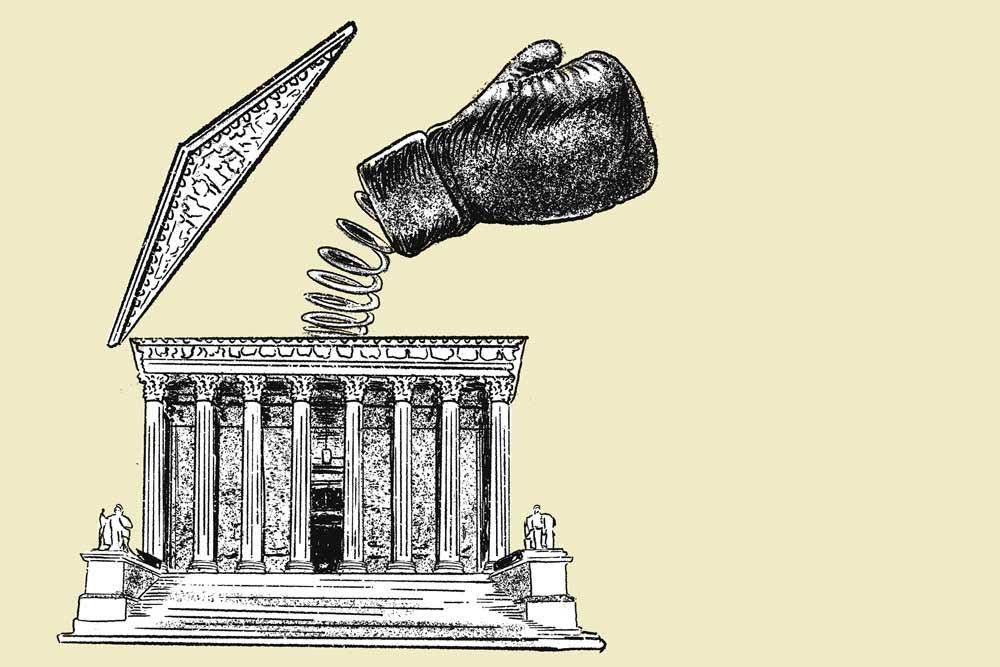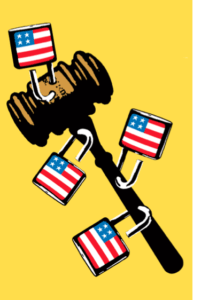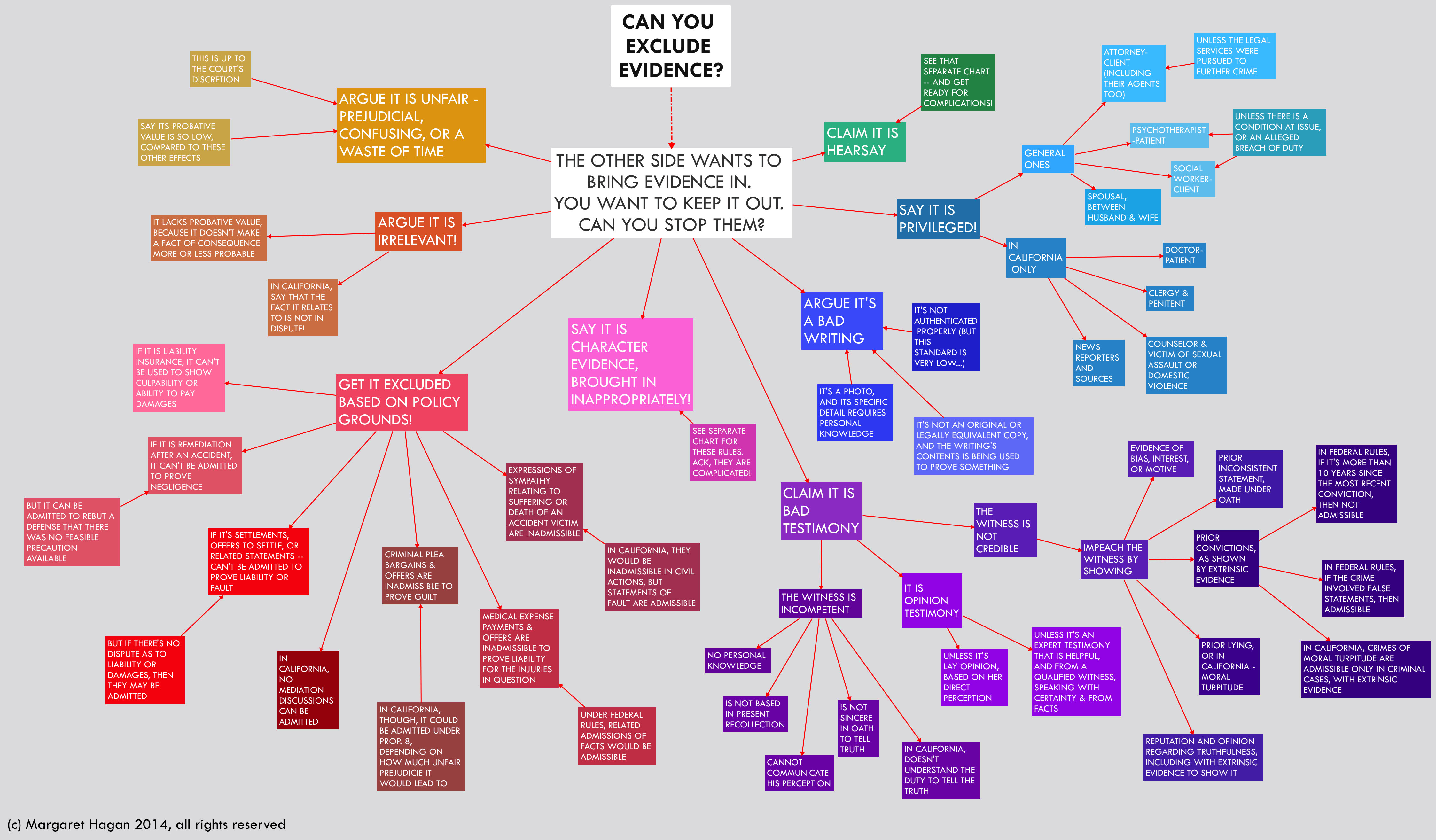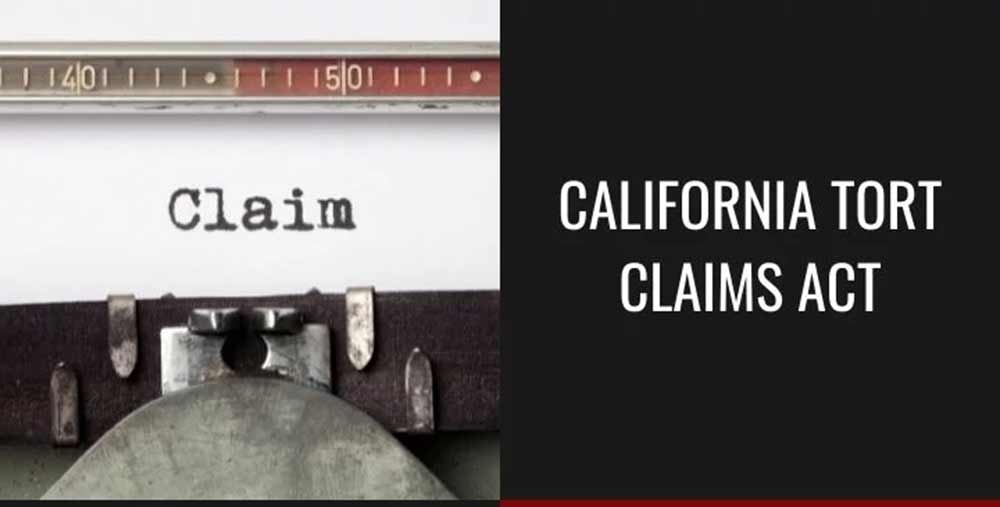CACI No. 1501. Wrongful Use of Civil Proceedings
Judicial Council of California Civil Jury Instructions (2022 edition)
MALICIOUS PROSECUTION CACI No. 1501 925 Copyright Judicial Council of California
downland entire Judicial Council of California Civil Jury Instructions CACI Here
1501.Wrongful Use of Civil Proceedings
[Name of plaintiff] claims that [name of defendant] wrongfully brought a lawsuit against [him/her/nonbinary pronoun/it]. To establish this claim, [name of plaintiff] must prove all of the following:
- That [name of defendant] was actively involved in bringing [or continuing] the lawsuit;
- That the lawsuit ended in [name of plaintiff]’s favor;]
- That no reasonable person in [name of defendant]’s circumstances would have believed that there were reasonable grounds to bring the lawsuit against [name of plaintiff];]
- That [name of defendant] acted primarily for a purpose other than succeeding on the merits of the claim;
- That [name of plaintiff] was harmed; and
- That [name of defendant]’s conduct was a substantial factor in causing [name of plaintiff]’s harm. [The law requires that the trial judge, rather than the jury, decide if [name of plaintiff] has proven element 2 above, whether the earlier lawsuit ended in [his/her/nonbinary pronoun/its] favor. But before I can do so, you must decide whether [name of plaintiff] has proven the following:
[List all factual disputes that must be resolved by the jury.]
- The special [verdict/interrogatory] form will ask for your finding on [this/these] issue[s].] [The law [also] requires that the trial judge, rather than the jury, decide if [name of plaintiff] has proven element 3 above, whether [name of defendant] had reasonable grounds for bringing the earlier lawsuit against [him/her/nonbinary pronoun/it]. But before I can do so, you must decide whether [name of plaintiff] has proven the following:
-
- [List all factual disputes that must be resolved by the jury.] The special [verdict/interrogatory] form will ask for your finding on
- [this/these] issue[s].] New September 2003; Revised April 2008, October 2008
Directions for Use
Element 4 expresses the malice requirement.
- Public Employee Immunity. Government Code section 821.6.
- “Although the tort is usually called ‘malicious prosecution,’ the word ‘prosecution’ is not a particularly apt description of the underlying civil action. The Restatement uses the term ‘wrongful use of civil proceedings’ to refer to the tort.” (5 Witkin, Summary of California Law (10th ed. 2005) Torts, § 486, internal citations omitted.)
- “To establish a cause of action for the malicious prosecution of a civil proceeding, a plaintiff must plead and prove that the prior action (1) was commenced by or at the direction of the defendant and was pursued to a legal termination in his, plaintiff’s, favor; (2) was brought without probable cause; and (3) was initiated with malice.” (Bertero v. National General Corp. (1974) 13 Cal.3d 43, 50 [118 Cal.Rptr. 184, 529 P.2d 608], internal citations omitted.)
- “The remedy of a malicious prosecution action lies to recompense the defendant who has suffered out of pocket loss in the form of attorney fees and costs, as well as emotional distress and injury to reputation because of groundless allegations made in pleadings which are public records.” (Sagonowsky v. More (1998) 64 Cal.App.4th 122, 132 [75 Cal.Rptr.2d 118], internal citations omitted.)
- “The malicious commencement of a civil proceeding is actionable because it harms the individual against whom the claim is made, and also because it threatens the efficient administration of justice. The individual is harmed because he is compelled to defend against a fabricated claim which not only subjects him to the panoply of psychological pressures most civil defendants suffer, but also the additional stress of attempting to resist a suit commenced out of spite or ill will, often magnified by slanderous allegations in the pleadings.” (Merlet v. Rizzo (1998) 64 Cal.App.4th 53, 59 [75 Cal.Rptr.2d 83], internal citation omitted.)
- “[The litigation privilege of Civil Code section 47] has been interpreted to apply to virtually all torts exceptmalicious prosecution.” (Kimmel v. Goland (1990) 51 Cal.3d 202, 209 [271 Cal.Rptr. 191, 793 P.2d 524].)
- “Liability for malicious prosecution is not limited to one who initiates an action. A person who did not file a complaint may be liable for malicious prosecution if he or she ‘instigated’ the suit or ‘participated in it at a later time.’ ” (Nunez v. Pennisi (2015) 241 Cal.App.4th 861, 873 [193 Cal.Rptr.3d 912].)
- “[A] cause of action for malicious prosecution lies when predicated on a claim for affirmative relief asserted in a cross-pleading even though intimately related to a cause asserted in the complaint.” (Bertero, supra, 13 Cal.3d at p. 53.)
- “A claim for malicious prosecution need not be addressed to an entire lawsuit; it may . . . be based upon only some of the causes of action alleged in the underlying lawsuit.” (Franklin Mint Co. v. Manatt, Phelps & Phillips, LLP (2010) 184 Cal.App.4th 313, 333 [109 Cal.Rptr.3d 143].)
- “[F]avorable termination requires favorable resolution of the underlying action in its entirety, not merely a single cause of action. ‘[I]f the defendant in the underlying action prevails on all of the plaintiff’s claims, he or she may successfully sue for malicious prosecution if any one of those claims was subjectively malicious and objectively unreasonable. But if the underlying plaintiff succeeds on any of his or her claims, the favorable termination requirement is unsatisfied and the malicious prosecution action cannot be maintained.’ ” (Citizens of Humanity, LLC v. Ramirez (2021) 63 Cal.App.5th 117, 128 [277 Cal.Rptr.3d 501], internal citation omitted.)
- “[A] lawyer is not immune from liability for malicious prosecution simply because the general area of law at issue is complex and there is no case law with the same facts that establishes that the underlying claim was untenable. Lawyers are charged with the responsibility of acquiring a reasonable understanding of the law governing the claim to be alleged. That achieving such an understanding may be more difficult in a specialized field is no defense to alleging an objectively untenable claim.” (Franklin Mint Co.,supra, 184 Cal.App.4th at p. 346.)
- “Our repeated references in Bertero to the types of harm suffered by an ‘individual’ who is forced to defend against a baseline suit do not indicate . . . that a malicious prosecution action can be brought only by an individual. On the contrary, there are valid policies which would be furthered by allowing nonindividuals to sue for malicious prosecution.” (City of Long Beach v. Bozek (1982) 31 Cal.3d 527, 531 [183 Cal.Rptr. 86, 645 P.2d 137], reiterated on remand from United States Supreme Court at 33 Cal.3d 727 [but holding that public entity cannot sue for malicious prosecution].)“[T]he courts have refused to permit malicious prosecution claims when they are based on a prior proceeding that is
- less formal or unlike the process in the superior court (i.e., a small claims hearing, an investigation or application not resulting in a formal proceeding),
- purely defensive in nature, or
- (3) a continuation of an existing proceeding.” (Merlet, supra, 64 Cal.App.4th at p. 60.)
- “[I]t is not enough that the present plaintiff (former defendant) prevailed in the action. The termination must ‘ “reflect on the merits,” ’ and be such that it ‘tended to indicate [the former defendant’s] innocence of or lack of responsibility for the alleged misconduct.’ ” (Drummond v. Desmarais (2009) 176 Cal.App.4th 439, 450 [98 Cal.Rptr.3d 183], internal citations omitted.)
- “ ‘The entry of summary judgment for the defense on an underlying claim on grounds of insufficient evidence does not establish as a matter of law that the litigant necessarily can “state[] and substantiate[]” . . . a subsequent malicious prosecution claim.’ ” (Cuevas-Martinez v. Sun Salt Sand, Inc. (2019) 35 Cal.App.5th 1109, 1120 [248 Cal.Rptr.3d 200].)
- “ ‘[A] voluntary dismissal on technical grounds, such as lack of jurisdiction, laches, the statute of limitations or prematurity, does not constitute a favorable termination because it does not reflect on the substantive merits of the underlying claim. . . .’ ” (Drummond, supra, 176 Cal.App.4th at p. 456.)
- “[Code of Civil Procedure] Section 581c, subdivision (c) provides that where a motion for judgment of nonsuit is granted, ‘unless the court in its order for judgment otherwise specifies, the judgment of nonsuit operates as an adjudication upon the merits.’ . . . [¶] We acknowledge that not every judgment of nonsuit should be grounds for a subsequent malicious prosecution action. Some will be purely technical or procedural and will not reflect the merits of the action. In such cases, trial courts should exercise their discretion to specify that the judgment of nonsuit shall not operate as an adjudication upon the merits.” (Nunez, supra, 241 Cal.App.4th at p. 874.)
- “ ‘ “[T]hat a malicious prosecution suit may be maintained where only one of several claims in the prior action lacked probable cause [citation] does not alter the rule there must first be a favorable termination of the entire action.” ’ Thus, if the defendant in the underlying action prevails on all of the plaintiff’s claims, he or she may successfully sue for malicious prosecution if any one of those claims was subjectively malicious and objectively unreasonable. But if the underlying plaintiff succeeds on any of his or her claims, the favorable termination requirement is unsatisfied and the malicious prosecution action cannot be maintained.” (Lane v. Bell (2018) 20 Cal.App.5th 61, 64 [228 Cal.Rptr.3d 605], internal citation omitted.)
- “ ‘ “A voluntary dismissal may be an implicit concession that the dismissing party cannot maintain the action and may constitute a decision on the merits. [Citations.] ‘It is not enough, however, merely to show that the proceeding was dismissed.’ [Citation.] The reasons for the dismissal of the action must be examined to determine whether the termination reflected on the merits.” [Citations.]’ Whether that dismissal is a favorable termination for purposes of a malicious prosecution claim depends on whether the dismissal of the [earlier] Lawsuit is considered to be on the merits reflecting [plaintiff’s ‘innocence’ of the misconduct alleged.” (JSJ Limited Partnership v. Mehrban (2012) 205 Cal.App.4th 1512, 1524 [141 Cal.Rptr.3d 338], internal citations omitted.)
- “If a conflict arises as to the circumstances explaining a failure to prosecute an action further, the determination of the reasons underlying the dismissal is a question of fact.” (Fuentes, supra, 38 Cal.App.4th at p. 1808, internal citations omitted.)
- “[W]hen a dismissal results from negotiation, settlement, or consent, a favorable termination is normally not recognized. Under these latter circumstances, the dismissal reflects ambiguously on the merits of the action.” (Weaver v. Superior Court (1979) 95 Cal.App.3d 166, 184-185 [156 Cal.Rptr. 745], internal citations omitted, disapproved on other grounds in Sheldon Appel Co., supra, 47 Cal.3d at p. 882.)
- “Not every case in which a terminating sanctions motion is granted necessarily results in a ‘favorable termination.’ But where the record from the underlying action is devoid of any attempt during discovery to substantiate allegations in the complaint, and the court’s dismissal is justified by the plaintiff’s lack of evidence to submit the case to a jury at trial, a prima facie showing of facts sufficient to satisfy the ‘favorable termination’ element of a malicious prosecution claim is established . . . .” (Daniels v. Robbins (2010) 182 Cal.App.4th 204, 219 [105 Cal.Rptr.3d 683].)
- “[T]he existence or absence of probable cause has traditionally been viewed as a question of law to be determined by the court, rather than a question of fact for the jury . . . . [¶] [It] requires a sensitive evaluation of legal principles and precedents, a task generally beyond the ken of lay jurors . . . .” (Sheldon Appel Co., supra, 47 Cal.3d at p. 875.)
- “When there is a dispute as to the state of the defendant’s knowledge and the existence of probable cause turns on resolution of that dispute, . . . the jury must resolve the threshold question of the defendant’s factual knowledge or belief. Thus, when . . . there is evidence that the defendant may have known that the factual allegations on which his action depended were untrue, the jury must determine what facts the defendant knew before the trial court can determine the legal question whether such facts constituted probable cause to institute the challenged proceeding.” (Sheldon Appel Co., supra, 47 Cal.3d at p. 881, internal citations omitted.)
- “Whereas the malice element is directly concerned with the subjective mental state of the defendant in instituting the prior action, the probable cause element calls on the trial court to make an objective determination of the ‘reasonableness’ of the defendant’s conduct, i.e., to determine whether, on the basis of the facts known to the defendant, the institution of the prior action was legally tenable.” (Sheldon Appel Co., supra, 47 Cal.3d at p. 878,.)
- “ ‘The benchmark for legal tenability is whether any reasonable attorney would have thought the claim was tenable. [Citation.]’ ” (Oviedo v. Windsor Twelve Properties, LLC (2012) 212 Cal.App.4th 97, 114 [151 Cal.Rptr.3d 117], internal citation omitted.)
- “ ‘The facts to be analyzed for probable cause are those known to the defendant [in the malicious prosecution action] at the time the underlying action was filed.’ ” (Walsh v. Bronson (1988) 200 Cal.App.3d 259, 264 [245 Cal.Rptr. 888], internal citations omitted.)
- “A litigant will lack probable cause for his action either if he relies upon facts which he has no reasonable cause to believe to be true, or if he seeks recovery upon a legal theory which is untenable under the facts known to him.” (Soukup v. Law Offıces of Herbert Hafif (2006) 39 Cal.4th 260, 292 [46 Cal.Rptr.3d 638, 139 P.3d 30].)
- “[W]e reject their contention that unpled hidden theories of liability are sufficient to create probable cause.” (Jay v. Mahaffey (2013) 218 Cal.App.4th 1522, 1542 [161 Cal.Rptr.3d 700].)
- “California courts have held that victory at trial, though reversed on appeal, conclusively establishes probable cause.” (Roberts v. Sentry Life Insurance (1999) 76 Cal.App.4th 375, 383 [90 Cal.Rptr.2d 408], original italics.)
- “California courts have long embraced the so-called interim adverse judgment rule, under which ‘a trial court judgment or verdict in favor of the plaintiff or prosecutor in the underlying case, unless obtained by means of fraud or perjury, establishes probable cause to bring the underlying action, even though the judgment or verdict is overturned on appeal or by later ruling of the trial court.’ This rule reflects a recognition that ‘[c]laims that have succeeded at a hearing on the merits, even if that result is subsequently reversed by the trial or appellate court, are not so lacking in potential merit that a reasonable attorney or litigant would necessarily have recognized their frivolousness.’ That is to say, if a claim succeeds at a hearing on the merits, then, unless that success has been procured by certain improper means, the claim cannot be ‘totally and completely without merit.’ Although the rule arose from cases that had been resolved after trial, the rule has also been applied to the ‘denial of defense summary judgment motions, directed verdict motions, and similar efforts at pretrial termination of the underlying case.’ ” (Parrish v. Latham & Watkins (2017) 3 Cal.5th 767, 776-777 [221 Cal.Rptr.3d 432, 400 P.3d 1], internal citations omitted.)
- “[T]he fraud exception requires ‘ “knowing use of false and perjured testimony.” ’ ” (Antounian v. Louis Vuitton Malletier (2010) 189 Cal.App.4th 438, 452 [117 Cal.Rptr.3d 3].)
- “Probable cause may be present even where a suit lacks merit. . . . Suits which all reasonable lawyers agree totally lack merit – that is, those which lack probable cause – are the least meritorious of all meritless suits. Only this subgroup of meritless suits present[s] no probable cause.” (Roberts, supra, 76 Cal.App.4th at p. 382.)
- “[A]n attorney may be held liable for malicious prosecution for continuing to prosecute a lawsuit discovered to lack probable cause.” (Zamos v. Stroud (2004) 32 Cal.4th 958, 970 [12 Cal.Rptr.3d 54, 87 P.3d 802].)
- “Although attorneys may rely on their clients’ allegations at the outset of a case, they may not continue to do so if the evidence developed through discovery indicates the allegations are unfounded or unreliable.“ (Cuevas-Martinez, supra, 35 Cal.App.5th at p. 1121.)
- “[W]here several claims are advanced in the underlying action, each must be based on probable cause.” (Lanz v. Goldstone (2015) 243 Cal.App.4th 441, 459 [197 Cal.Rptr.3d 227].)
- “As an element of the tort of malicious prosecution, malice at its core refers to an improper motive for bringing the prior action. As an element of liability it reflects the core function of the tort, which is to secure compensation for harm inflicted by misusing the judicial system, i.e., using it for something other than to enforce legitimate rights and secure remedies to which the claimant may tenably claim an entitlement. Thus the cases speak of malice as being present when a suit is actuated by hostility or ill will, or for some purpose other than to secure relief. It is also said that a plaintiff acts with malice when he asserts a claim with knowledge of its falsity, because one who seeks to establish such a claim ‘can only be motivated by an improper purpose.’ A lack of probable cause will therefore support an inference of malice.” (Drummond, supra, 176 Cal.App.4th at pp. 451-452, internal citations omitted.)
- A lack of probable cause is a factor that may be considered in determining if the claim was prosecuted with malice [citation], but the lack of probable cause must be supplemented by other, additional evidence.” (Silas v. Arden (2013) 213 Cal.App.4th 75, 90 [152 Cal.Rptr.3d 255].)
- “Because malice concerns the former plaintiff’s actual mental state, it necessarily presents a question of fact.” (Drummond, supra, 176 Cal.App.4th at p. 452.)
- “ ‘Since parties rarely admit an improper motive, malice is usually proven by circumstantial evidence and inferences drawn from the evidence.’ ‘[M]alice can be inferred when a party continues to prosecute an action after becoming aware that the action lacks probable cause.’ ” (Cuevas-Martinez, supra, 35 Cal.App.5th at p. 1122,.)
- “Negligence does not equate with malice. Nor does the negligent filing of a case necessarily constitute the malicious prosecution of that case.” (Grindle v. Lorbeer (1987) 196 Cal.App.3d 1461, 1468 [242 Cal.Rptr. 562].)
- “The motive of the defendant must have been something other than that of bringing a perceived guilty person to justice or the satisfaction in a civil action of some personal or financial purpose.” (Downey Venture v. LMI Insurance Co. (1998) 66 Cal.App.4th 478, 494 [78 Cal.Rptr.2d 142], internal citations omitted.)
To Learn More…. Read MORE Below and click the links
Abuse & Neglect – The Reporters (Police, D.A & Medical & the Bad Actors)
If You Would Like to Learn More About: The California Mandated Reporting Law Click Here
To Read the Penal Code § 11164-11166 – Child Abuse or Neglect – California Penal Code 11164-11166
Child Abuse and Neglect Reporting Act Article 2.5. (CANRA) Click Here
Mandated Reporter form click link Mandated Reporter FORM SS 8572.pdf – The Child Abuse
ALL POLICE CHIEFS, SHERIFFS AND COUNTY WELFARE DEPARTMENTS
INFORMATION BULLETIN click here Officers and DA’s for (Procedure to Follow)
It Only Takes a Minute to Make a Difference in the Life of a Child
Learn More About True Threats Here below….
We also have the The Brandenburg v. Ohio (1969) – 1st Amendment
CURRENT TEST = We also have the The ‘Brandenburg test’ for incitement to violence – 1st Amendment
We also have the The Incitement to Imminent Lawless Action Test– 1st Amendment
We also have the True Threats – Virginia v. Black is most comprehensive Supreme Court definition – 1st Amendment
We also have the Watts v. United States – True Threat Test – 1st Amendment
We also have theClear and Present Danger Test – 1st Amendment
We also have theGravity of the Evil Test – 1st Amendment
We also have the Elonis v. United States (2015) – Threats – 1st Amendment
Learn More About What is Obscene….
We also have the Miller v. California – 3 Prong Obscenity Test (Miller Test) – 1st Amendment
We also have the Obscenity and Pornography – 1st Amendment
Learn More About Police, The Government Officials and You….
We also have theBrayshaw v. City of Tallahassee – 1st Amendment – Posting Police Address
We also have thePublius v. Boyer-Vine –1st Amendment – Posting Police Address
We also have the Lozman v. City of Riviera Beach, Florida (2018) – 1st Amendment – Retaliatory Police Arrests
We also have the Nieves v. Bartlett (2019) – 1st Amendment – Retaliatory Police Arrests
We also have the Freedom of the Press – Flyers, Newspaper, Leaflets, Peaceful Assembly – 1st Amendment
We also have the Insulting letters to politician’s home are constitutionally protected, unless they are ‘true threats’ – 1st Amendment
We also have the Introducing TEXT & EMAILDigital Evidencein California Courts – 1st Amendment
We also have the First Amendment Encyclopedia very comprehensive – 1st Amendment
ARE PEOPLE LYING ON YOU? CAN YOU PROVE IT? IF YES…. THEN YOU ARE IN LUCK!
We also have the Penal Code 118 PC – California Penalty of “Perjury” Law
We also have theFederal Perjury – Definition by Law
We also have the Penal Code 132 PC – Offering False Evidence
We also have the Penal Code 134 PC – Preparing False Evidence
We also have thePenal Code 118.1 PC – Police Officers Filing False Reports
We also have the Spencer v. Peters– Police Fabrication of Evidence – 14th Amendment
We also have the Penal Code 148.5 PC – Making a False Police Report in California
We also have the Penal Code 115 PC – Filing a False Document in California
Sanctions and Attorney Fee Recovery for Bad Actors
FAM § 3027.1 – Attorney’s Fees and Sanctions For False Child Abuse Allegations – Family Code 3027.1 – Click Here
FAM § 271 – Awarding Attorney Fees– Family Code 271 Family Court Sanction Click Here
Awarding Discovery Based Sanctions in Family Law Cases – Click Here
FAM § 2030 – Bringing Fairness & Fee Recovery – Click Here
Know Your Rights Click Here (must read!)
Under 42 U.S.C. $ection 1983 – Recoverable Damage$
42 U.S. Code § 1983– Civil Action for Deprivation of Right$
$ection 1983 Lawsuit – How to Bring a Civil Rights Claim
18 U.S. Code § 242 – Deprivation of Right$ Under Color of Law
18 U.S. Code § 241 – Conspiracy against Right$
$uing for Misconduct – Know More of Your Right$
Police Misconduct in California – How to Bring a Lawsuit
Malicious Prosecution / Prosecutorial Misconduct – Know What it is!
New Supreme Court Ruling – makes it easier to sue police
RELATIONSHIP WITH YOUR CHILDREN & YOUR CONSTITUIONAL RIGHT$ + RULING$
YOU CANNOT GET BACK TIME BUT YOU CAN HIT THOSE PUNKS WHERE THEY WILL FEEL YOU = THEIR BANK
We also have the 9.3 Section 1983 Claim Against Defendant as (Individuals) — 14th Amendment thisCODE PROTECTS all US CITIZENS
We also have the Amdt5.4.5.6.2 – Parental and Children’s Rights 5th Amendment thisCODE PROTECTS all US CITIZENS
We also have the 9.32 – Interference with Parent / Child Relationship – 14th Amendment thisCODE PROTECTS all US CITIZENS
We also have the California Civil Code Section 52.1Interference with exercise or enjoyment of individual rights
We also have the Parent’s Rights & Children’s Bill of RightsSCOTUS RULINGS FOR YOUR PARENT RIGHTS
We also have a SEARCH of our site for all articles relatingfor PARENTS RIGHTS Help!
GRANDPARENT CASE LAW
Troxel v. Granville, 530 U.S. 57 (2000) – Grandparents – 14th Amendment
Third “PRESUMED PARENT” Family Code 7612(C) – Requires Established Relationship Required
S.F. Human Servs. Agency v. Christine C. (In re Caden C.)
9.32 Particular Rights – Fourteenth Amendment – Interference with Parent / Child Relationship
Parent’s Rights & Children’s Bill of Rights
Cal State Bar PDF to read about Three Parent Law – The State Bar of California family law news issue4 2017 vol. 39, no. 4.pdf
Contesting / Appeal an Order / Judgment / Charge
Options to Appealing– Fighting A Judgment Without Filing An Appeal Settlement Or Mediation
Cal. Code Civ. Proc. § 1008 Motion to Reconsider
Penal Code 1385 – Dismissal of the Action for Want of Prosecution or Otherwise
Penal Code 1538.5 – Motion To Suppress Evidence in a California Criminal Case
CACI No. 1501 – Wrongful Use of Civil Proceedings
Penal Code “995 Motions” in California – Motion to Dismiss
WIC § 700.1 – If Court Grants Motion to Suppress as Evidence
 Epic Criminal / Civil Rights SCOTUS Help – Click Here
Epic Criminal / Civil Rights SCOTUS Help – Click Here
 Epic Parents SCOTUS Ruling – Parental Rights Help – Click Here
Epic Parents SCOTUS Ruling – Parental Rights Help – Click Here
 Judge’s & Prosecutor’s Jurisdiction– SCOTUS RULINGS on Judicial & Prosecutorial Conduct
Judge’s & Prosecutor’s Jurisdiction– SCOTUS RULINGS on Judicial & Prosecutorial Conduct
Family Treatment Court Best Practice Standards
Download Here this Recommended Citation
Please take time to learn new UPCOMING
The PROPOSED Parental Rights Amendment
to the US CONSTITUTION Click Here to visit their site
The proposed Parental Rights Amendment will specifically add parental rights in the text of the U.S. Constitution, protecting these rights for both current and future generations.
The Parental Rights Amendment is currently in the U.S. Senate, and is being introduced in the U.S. House.


